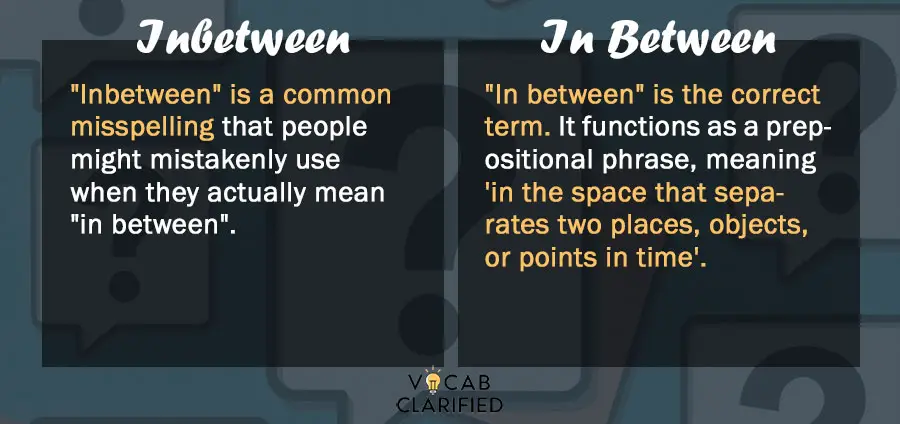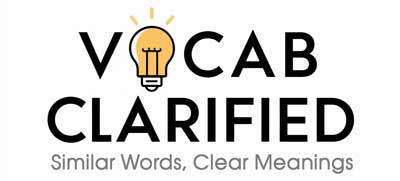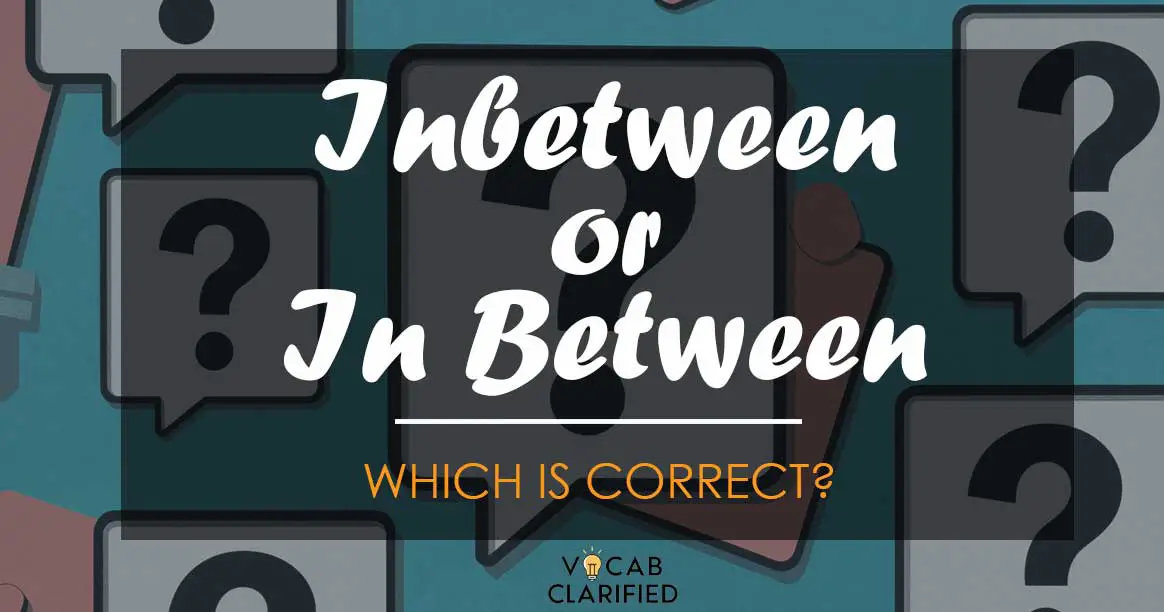Have you ever been typing an email or message and paused, asking yourself whether to write “inbetween” or “in between”?
This grammatical dilemma is more common than you might think, leading many to second-guess their writing. If you are caught in the dilemma of selecting the correct form, you are not alone. This article aims to clear the confusion surrounding “inbetween” and “in between”.
Understanding “Inbetween” and “In Between”
Inbetween: Definition and Usage
“Inbetween” is a common misspelling that people might mistakenly use when they actually mean “in between”.
It is not recognized as a standard word in the English language and is often considered incorrect in formal writing contexts. However, it may appear in informal communication or in certain artistic or creative contexts as a stylistic choice.
In Between: Definition and Usage
On the other hand, “in between” is the correct term, widely accepted and used in both spoken and written English. It functions as a prepositional phrase, meaning ‘in the space that separates two places, objects, or points in time.’
For instance:
- Please sit in between Sarah and John.
- The shop is located in between the pharmacy and the bakery.

Side-by-Side Comparison
| Aspect | Inbetween | In Between |
| Definition | Incorrect spelling, not a standard word | A prepositional phrase meaning ‘in the space between’ |
| Common Usage | Typically a misspelling (avoid using) | “She found a note tucked in between the pages.” |
| Key Differences | Considered incorrect | Correct and accepted form |
Clear Recommendation
When deciding between “inbetween” and “in between,” remember that “in between” is always the preferred term in standard English. Whether you are writing a formal document, an email, or a message, “in between” is the correct choice. However, if you are engaging in creative writing or making a stylistic choice, be aware that “inbetween,” while not standard, might appear in such contexts. Still, it’s essential to know your audience and the formality required for the situation.
Everyday Usage Examples
Here are some everyday usage examples of the phrase “in between”:
- Morning Routine: “I like to have my coffee in between getting dressed and leaving for work.”
- Seating Arrangement: “At the dinner table, place the salt and pepper shakers in between the two main dishes.”
- Work Breaks: “I usually take a short walk in between meetings to clear my mind.”
- Exercise Routine: “She does stretching exercises in between her cardio and strength training segments.”
- Snacking: “He had a small snack in between lunch and dinner to keep his energy up.”
- Study Sessions: “I take a ten-minute break in between each hour of studying to stay focused.”
- Commuting: “There’s a small park in between her home and workplace where she sometimes stops to relax.”
- TV Shows: “We discussed the day’s events in between episodes of our favorite series.”
- Cooking: “You should let the meat rest in between cooking and carving to preserve its juices.”
- Kids’ Playtime: “The children played quietly in between their scheduled activities at the daycare.”
FAQ: Inbetween vs. In Between
The correct form is ‘in between’ when used as a preposition or adverb in sentences. ‘Inbetween’ is not standard English and is typically considered a misspelling. Use ‘in between’ when referring to something occurring in the middle of two points or elements.
Yes, ‘in between’ can be used in formal writing. It is important to use it appropriately as a preposition or adverb, depending on the context. Ensure it flows naturally within the sentence structure and maintains the formal tone of your document.
Yes, there is a slight difference. ‘Between’ is used when referring to two or more distinct items or points, while ‘in between’ suggests a position that is surrounded by items or points without direct contact. ‘In between’ is often more specific to positioning, whereas ‘between’ can be used more broadly.
‘In between’ is typically not hyphenated unless it is used as an adjective before a noun, which is rare. In most contexts, ‘in between’ should be written as two separate words without a hyphen.
‘In between’ can be used to describe something situated at an intermediate point or position. For example, “The coffee shop is located in between the bookstore and the bakery.”
Yes, some synonyms include ‘intermediate’, ‘midway’, ‘amid’, ‘among’, and ‘sandwiched’. However, the best synonym to use depends on the specific context and sentence structure.
Common mistakes include using ‘inbetween’ as one word, misplacing it in a sentence, or using it when ‘between’ alone would be more appropriate. Always double-check the context and grammar to ensure proper usage.
Conclusion
Understanding the difference between “inbetween” and “in between” clarifies this common area of confusion. Remember, “in between” is the accurate and accepted choice for depicting something located in the middle of two points.
With a bit of practice, deciding whether it is “inbetween or in between” will become a simple part of your writing and conversation.

